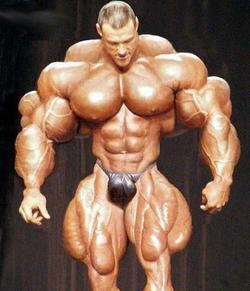Metformin, sold under the trade name Glucophage, is used to treat diabetes, but several recent papers show that it also helps non-diabetics to lose weight by reducing hunger.
You may be overweight because your body makes too much insulin, especially if your store your fat primarily in your belly. When you eat, your blood sugar level rises. The higher it rises, the more insulin your pancreas releases. Insulin makes you fat by acting on your brain to make you hungry, your liver to manufacture fat, and the fat cells in your belly to fill with fat. So the treatment for this type of obesity is to avoid foods that cause the highest rise in blood sugar and to take medications that prevent your blood sugar levels from rising too high. Avoid bakery products, pastas and all foods made from flour, fruit juices and everything with added sugar. Eat fruits and root vegetables such as potatoes only with meals.
After you eat, sugar goes from your intestines into your bloodstream, and then immediately into your liver. Then your liver releases sugar back into your bloodstream to cause your blood sugar level to rise. To keep blood sugar levels from rising too high, your pancreas release insulin into your bloodstream. Insulin makes you hungry all the time and causes your liver to convert extra calories to fat and it constricts arteries to cause heart attacks. You need insulin to keep blood sugar levels from rising too high to cause diabetes, nerve damage, heart attacks, strokes and kidney damage. Glucophage reduces sugar release from your liver to prevents blood sugar levels from rising too high, so your body doesn't need to produce as much insulin that makes you hungry and causes your liver to make fat.
Glucophage lowers insulin levels, prevents many of the side effects of diabetes and can be used by people who want to lose weight. However, Glucophage is not effective when your blood is acidic from excess lactic acid and recent research shows that exercise, which raises lactic acid, does not cause blood acid levels to rise enough to reduce Glucophage's benefits. Glucophage, itself, does not raise blood lactate levels and is therefore considerably safer than doctors originally thought. Since Glucophage lowers insulin, diabetics should be placed on Glucophage to lower their requirements for all other medications used to treat diabetes.
A common cause of obesity in women is called polycystic ovary syndrome, which is caused by having high blood levels of insulin. Glucophage helps these women to lose weight. See my report on
Polycystic Ovary Syndrome (PCOS).Glucophage is a safe medication that prevents blood sugar levels from rising too high, but you defeat its effects by taking foods that cause rapid rises in blood sugar levels. So taking Glucophage after eating two bagels will not help you to lose weight. I prescribe 500 mg of Glucophage to be taken a few minutes before you eat, usually three times a day. You should not take it if you have kidney disease, heart failure or any medical condition that could make your blood acidic. There are many drugs that cannot be taken with Glucophage, so check with your doctor about all your medications. If you have nausea or diarrhea, take half a pill (250 mg) in the middle of a meal once a day, and if you then have no symptoms, try to work up to one half a pill before each meal.
References Subscribe





 17:12
17:12
 kaniamazdar
kaniamazdar











